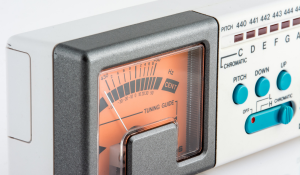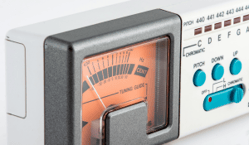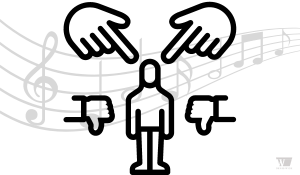The Art of Tuning: Part 1


Tuning is one of the few areas of music that is binary; something is in tune or it is not. However, even though most everyone would agree with this statement, the subject of tuning and its pedagogy get surprisingly muddled especially within the world of marching band. While there are still many ways to address tuning, keeping in mind the following concepts will help guide you to success and diagnose problems you may encounter.
Tuning is a comparison. At its simplest, tuning is getting two or more notes to have the simplest ratio between the frequency of their soundwaves, for example 1:1 for unison pitches and 1:2 for octaves in Western music. This ratio is a comparison, which is perhaps the most forgotten and yet fundamental aspect of tuning; before a note can be considered in or out of tune, it has to be compared to another note. Therefore, any time we are trying to address tuning we have to include the context of what we are tuning to and why.
In general, we address tuning because we hear an error in performance or in other words we hear that two or more notes do not compare to each other in the way we expect or want. To accurately diagnose why and address the issue, we must first determine what that comparison should be and what is being compared.
Get our newest tips, updates, videos, clinics, community events, and more by joining Denis Wick Tips Blog
Tone and its relationship to tuning. To understand this, first we should establish that for the purposes of this discussion “tone” means timbre and/or the character, quality, or color of sound being produced. Given this, but before even getting to any science or math, it should be intuitive that good tone is important because if you as the listener don’t like the sounds being compared, then why bother comparing them? Scientifically, it’s important to understand that when an instrument plays a note, it actually produces a whole series of frequencies. The proportions and relationships of these frequencies are what we as musicians call tone, with the lowest frequency or “fundamental” being what we usually refer to as the note. While there is a wide palette of different tones instruments can produce, the ones that most people find pleasing are those with frequencies that are “in tune” with the fundamental and thus compare to each other using simple ratios.
This means that tone is important to tuning in two very important ways. First, playing with good tone ensures that you are producing a sound worth tuning, and because it includes frequencies that work well with the fundamental it could be argued that you are playing more in tune with yourself. Second, as a result of this it will be easier to play in tune with other people because when all the frequencies that make up your tone are matched to your fundamental, they are more likely to match another person’s fundamental as well. All of this leads to two simple but extremely important concepts:
- Get the tone right before you tune it.
- If you adjust the tuning, keep the tone.
It’s worth noting that this information alone is actually enough to extrapolate everything else needed to fix most tuning problems regardless of the situation. In part two, we’ll discuss some specific ways to apply these concepts and some common pitfalls that face the unique situations that marching bands find themselves in.

Is your mute older than ours? Visit our Denis Wick Artist Group Oldest Mute Gallery to view our collection and submit an image of your own mute, or story of your favorite dent, to be added to our gallery.

Find all our Denis Wick resources in one spot on the Denis Wick app. Download to view videos, clinics, educator resources, podcasts, product information & more!


